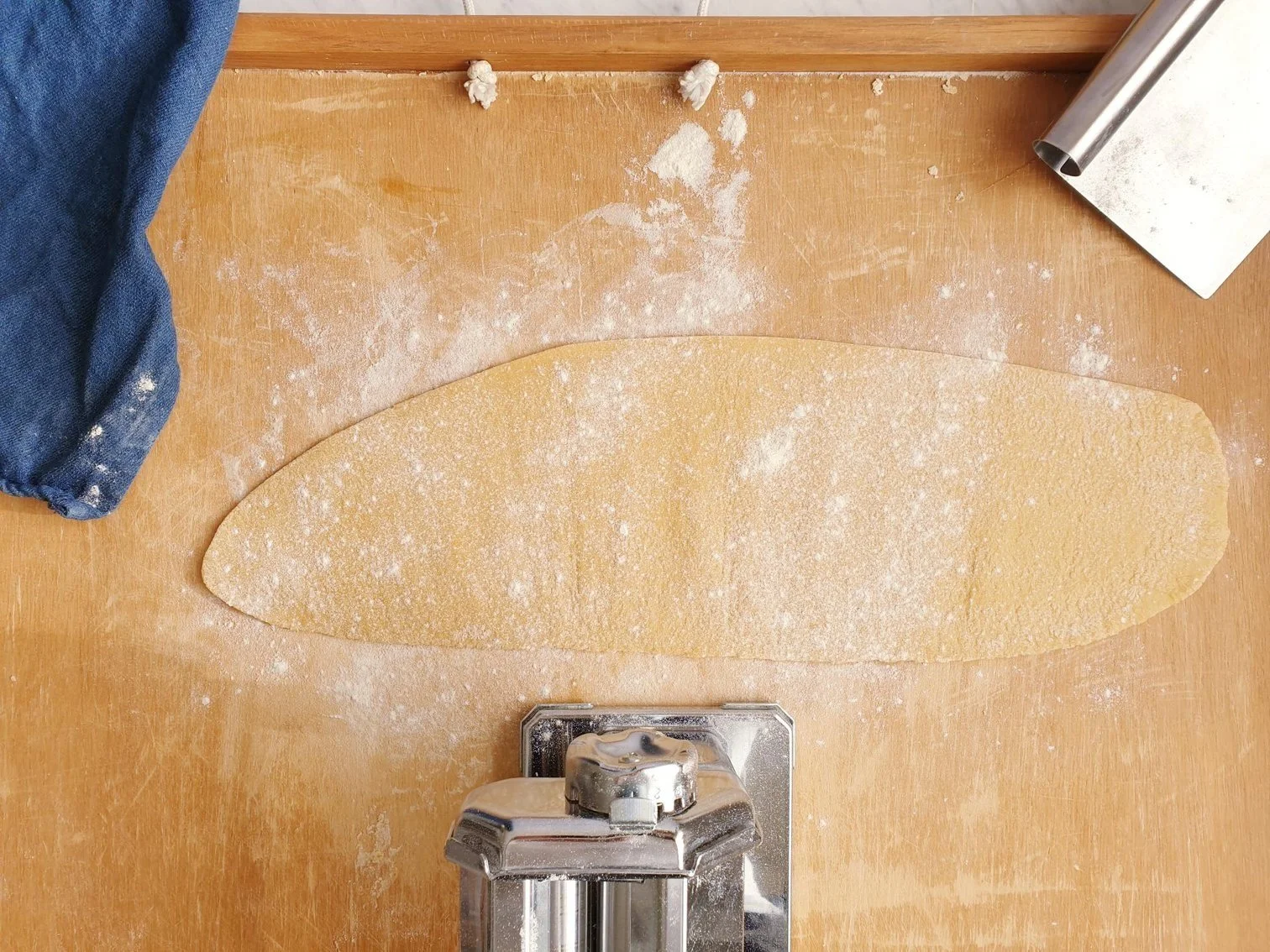Bleki – Fresh Istrian pasta Recipe
Bleki are one of the typical Istrian square shaped fresh pasta, similar to Italian Maltagliati. They are normally home made and hand rolled with a wooden rolling pin, but these days the pasta machine is often used instead.
The squares are traditionally cut from lasagna pasta sheets by hand with a sharp knife or with a fluted pastry wheel for a sightly more “modern”and decorative touch.
Due to its shape and thickness (bleki are slightly thicker compared to other types of pasta made from regular thin pasta lasagna sheets). This type of pasta is very pleasant to eat because when bleki are cooked they almost have a texture of a dumpling.
Bleki, this simple pasta, truly reflects the peasant life in Istria and represents real home rustic cooking. Bleki are very easy to make and if you have never made fresh pasta yourself at home and have been always temped, but find the task quite daunting, this is a perfect recipe to start with.
Traditional Istrian pasta holds a special place in Istrian gastronomy among other original dishes, and
changed its form and name through the journey from Italy to Istria.
There are two variations of bleki, the first made with white flour, pinch of sea salt and water. Bleki made like this are usually added to soups, like a typical Pasta e fasoi (Pasta and beans soup), to give soups thickness and velvety texture, as fresh pasta during cooking process releases the starch.
The second variation is often made with eggs, if a local family has a few chickens, so if you prefer egg-based pasta, and don’t raise your own chickens, you can buy organic eggs, or use ordinary eggs to make the pasta. However, traditionally, this egg based Bleki would only be made for special occasions like weddings, major holidays, special Sunday lunch, and other special events, as it was traditionally paired, and still is, with chicken or rabbit goulash, meat dishes equally reserved for celebratory occasions.
My paternal nona shared with me that bleki in her village and the surrounding area would be called blečiċi which is a diminutive and affectionate version of the word for bleks, which means krpica in standard Slovenian, indicating a small piece of cloth.
This type of pasta really represents a true gastronomic osmosis between Istria and Friuli, the most north-eastern region of Italy, where bleki are called blecs or referred to as biechi and are often made with a mixture of white flour and buckwheat flour.
This much loved pasta could be sometimes found on the menus in local family run restaurants on both sides of the border, but unfortunately not as frequently as a special dish of the day as I would have liked.
However, keep in mind that Bleki is a type of pasta that is made and consumed on the same day, and is not suitable for drying.
Ingredients
Serves 4-6
400 g 00 pasta flour
4 large free range or organic eggs
pinch of sea salt
Method
Place the flour directly on a working surface, wooden board or mixing bowl and make a well in the centre.
Crack the eggs directly into a well and add a pinch of salt.
Using a fork, mix the eggs with the flour, incorporating a little at a time, until everything is combined. At this stage you will end up with pieces of dough. Just keep working it until it comes together. You will get at first a rough and floury dough.
Start kneading the dough, which at first may feel a little dry, and at this stage you might think the recipe has go wrong. It could take around 10 min of kneading for the gluten to develop in the flour and to get a smooth lump of dough.
Wrap dough tightly with cling film or a clean cotton kitchen cloth and let it rest at the room temperature for about 30 minutes.
Unwrap the dough and cut it in half. Cover the half of the dough that you are not working with, with cling film to prevent it from drying and cracking.
With your hands flatten the other half of the dough to a thickness of about 0.5cm and lightly dust with flour as need it to prevent sticking.
Put the flattened half of the dough through pasta machine on the widest setting.
Fold the dough in half, keep rollers on the widest setting, and reroll the dough.
Flour as needed to prevent sticking, and keep rolling pasta dough through pasta machine reducing the width of rollers one setting at a time.
Continue rolling until pasta dough has been rolled through second thinnest setting.
Repeat the same process with the other half of pasta dough.
At this stage you should end up with a few pasta (lasagna) sheets. Place them on a lightly floured surface.
With a sharp knife (traditionally done) or fluted pastry cutter, cut pasta sheets into squares.
Place bleki on a lightly floured wooden board or baking tray making sure the pasta squares are dusted between the layers.
Pasta is ready to be cooked immediately, alternatively cover bleki well with cling and chill until ready to use, more or less up to four hours.
Just a thought
Normally, about 80-100g of pasta per person, with your choice of sauce will make a quite substantial plate of meal. If using pasta as a starter reduce the amount of pasta to 50-60g.












